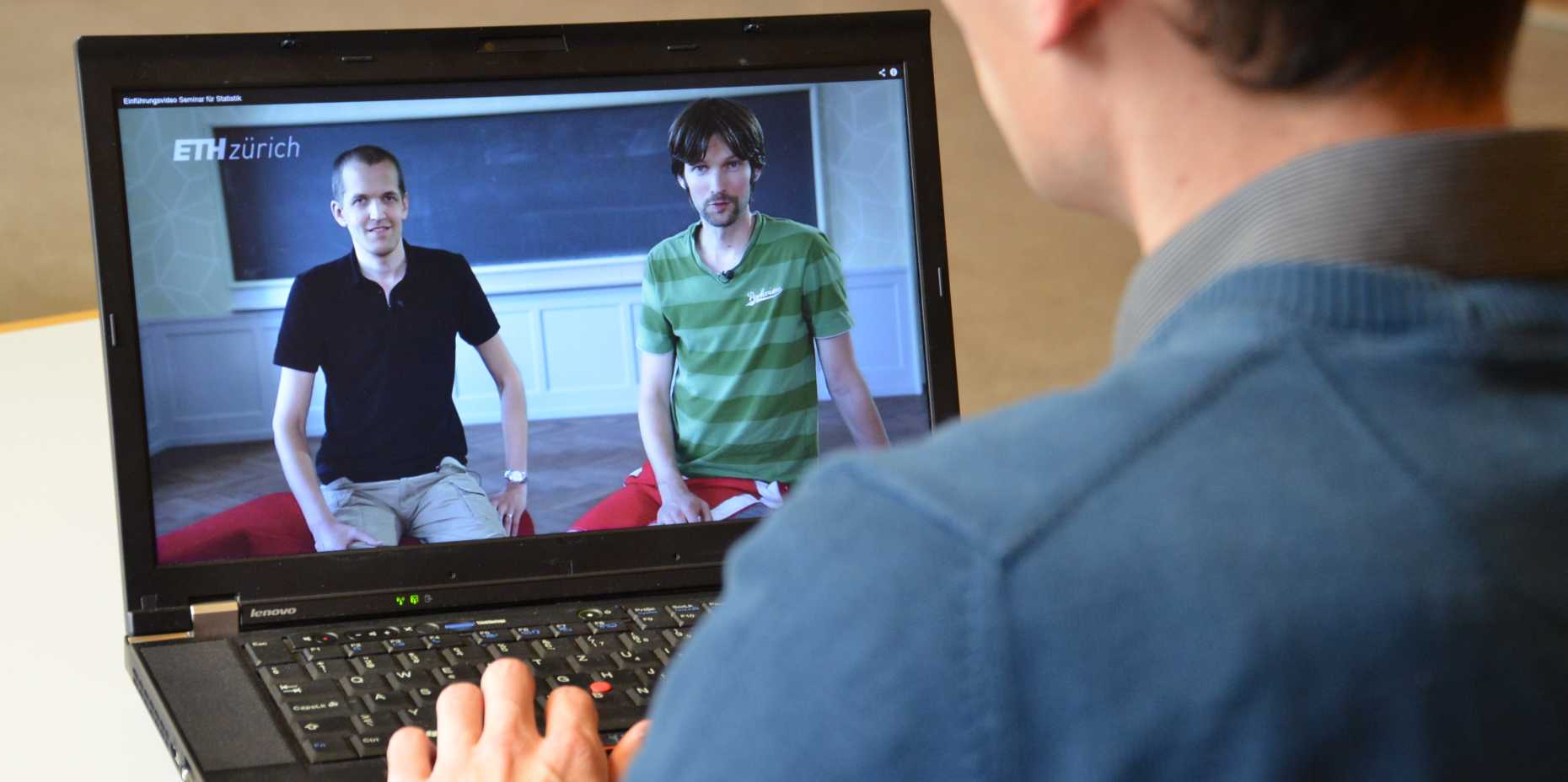New online courses at ETH Zurich
ETH Zurich is committed to online teaching. In contrast to other universities, ETH intends to make its own students the primary beneficiaries of its online activities.
The future is online. Does this also apply to education? “Yes” is the response from a number of universities around the world that are currently investing considerable resources in the development of new online courses. Everyone is talking about MOOCs, massive open online courses, a type of online distance learning which is intended to address the needs of a large number of students. The students complete the courses remotely, anywhere in the world in front of a computer screen, and when they pass an online examination they receive a corresponding certificate.
ETH Zurich also believes that online teaching has a future in education. However, in a pilot phase running through the end of 2014, it is not focussing on MOOCs but instead on online activities intended to complement traditional classroom instruction based on lectures and exercises. This autumn semester, for the first time, ETH is offering three online courses called TORQUEs – tiny, open-with-restriction courses focussed on quality and effectiveness. In other words, online courses with the goal of improving the quality and efficiency of instruction.
Benefitting ETH students first and foremost
The first two TORQUEs are part of ETH professor Renate Schubert’s lectures in economics and Materials Science and Computational Science and Engineering study programmes’ lectures in physics II respectively. The third TORQUE is part of an introductory course in R, a statistics program frequently used at ETH Zurich.
“It is ETH Zurich’s strategy to ensure that our own students are the primary beneficiaries of these online activities in teaching,” says TORQUE Project Manager Andreas Reinhardt from the Educational Development and Technology (LET) staff unit. Furthermore, all members of Swiss universities have access to the TORQUEs’ password-protected area, with a single exception. The courses, though, are tailored to ETH students.
The ‘flipped’ classroom
TORQUEs consist of video sequences in which knowledge is imparted plus online exercises. Students can exchange information about course content among themselves and with tutors in an online forum. The idea is that students can prepare themselves for the associated lecture by using self-study techniques with the TORQUE learning sequences.
The online courses at ETH follow the concept of the ‘flipped’ classroom. Traditionally, knowledge is imparted during a lecture and then exercises are done at home. In the ‘flipped’ classroom, it is just the opposite: the knowledge is imparted to a large extent during self-study, and classroom time is used for exercises, in-depth study and critical reflection on the material. “Through TORQUEs, we can shift the imparting of knowledge to self-study with videos, which leaves more time in the classroom for interactions between the lecturers and the students. This is enhances the quality of time spent in the classroom”, says Reinhardt.
In the next few months, ETH intends to gather experience with this process. “We are, however, not ruling out that the TORQUEs we have today could be converted into publically accessible MOOCs in future,” adds Reinhardt. There are plans to offer three to four additional courses in the upcoming spring semester.
New version and award for EduApp
For the past year, ETH Zurich has offered the EduApp to its students and lecturers. It presents students with timetables and building floor plans on a smartphone, and it helps instructors design their lectures more interactively. Using the app, for instance, it is possible to conduct exercises which include online voting during a lecture.
As of this autumn semester, the app has been upgraded based on feedback and first user experiences. Ease of use in particular has been improved with Version 2.0. In addition to new features such as the use of images and mathematical formulas in online voting, the app has been simplified for lecturers and some features such as schedules and building floor plans are also available offline. The app was used by 25 lecturers in their classes during the 2012/2013 academic year, and more than 6,000 ETH students have installed it on their smartphones.
Just a few weeks ago, the ETH EduApp was honoured with the Best Paper Award at the annual Gesellschaft für Medien in der Wissenschaft (GMW, Society for Media in Science) meeting in Frankfurt, Germany. The GMW annual meeting is the largest German-language conference in the field of digital media and universities.
For further information about EduApp including links for downloads, go to eduapp.ethz.ch

